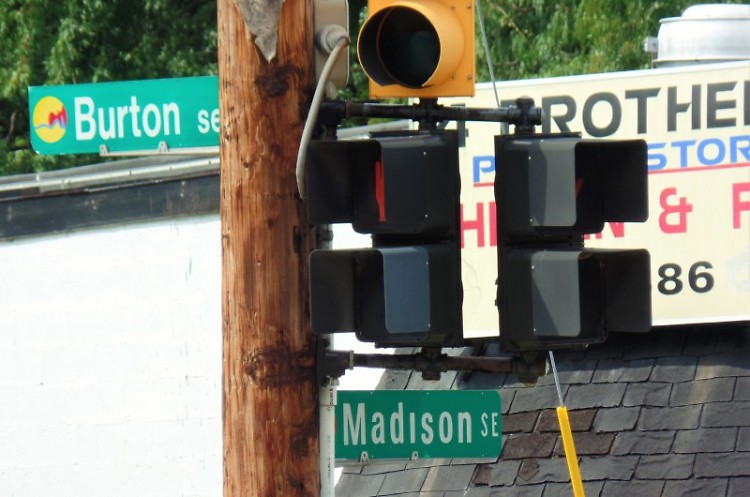Interactions between police officers and people of color have drawn national attention lately, and the City of Grand Rapids is taking pro-active measures. The city has hired Lamberth Consulting to perform a widespread review of traffic stops throughout the city. In a recent series of six community meetings held in different neighborhoods, citizens heard both city officials and consultants explain the scope, method and timeline of the study.
Jerry L. Clayton, Vice-President of Training for Lamberth Consulting and Sheriff for Washtenaw County in Michigan, spoke to a group of citizens gathered at the Michigan First Credit Union at 1815 Breton S.E. on August 29, 2016. Clayton shared that the consultant group has begun gathering benchmark data at twenty intersections throughout the city. Trained surveyors will record the perceived race and gender of drivers that pass through these intersections. The survey will be conducted across different days of the week and all times of the day. This will establish the racial composition of travelers through these areas at different times.
“We cannot use census data,” Clayton said. While census data records the racial composition of residents of an area, that may be different than those who drive through the area, he said.
Once the benchmark data is collected, from August to November, it will be compared with the traffic stop data collected by the GRPD over the past three years. Results will be shared for each intersection and then averaged to show a result for the entire city. “We focus on traffic stops to show bias because they are a high discretionary activity. The law enforcement officer has the most discretion in initiating a traffic stop, rather than responding to a call,” Clayton said.
“If in a certain area you have 60 percent African-American travelers, and the traffic stops involving them run higher, then that could indicate bias,” Clayton said. Results will be calculated as an odds ratio.
“The odds ratio is best understood by filling in the ratio in [this] sentence: ‘If you are Black you are ___ times as likely to be stopped as if you are not Black,’” states a similar report by Lamberth from 2004. “Odds ratios between 1 and 1.5 are benign, [while] odds ratios of 1.5 to 2.0 suggest that … targeting of Blacks may be occurring. [Odds ratios] of over 2 should be seriously considered by the GRPD.”
“The study is the beginning,” said Clayton. Lamberth Consulting will then provide recommendations, which City Manager Gregory Sundstrom acknowledged is the city’s responsibility to put into place. Police Chief David Rahinsky, wearing one of the body cameras recently purchased for the police force, also addressed the audience. “Our police officers agree that this is important.”
Russell Olmsted, who attended the meeting, asked about the Lamberth report filed in 2004 and what was done about it. Olmsted shared that the report found certain areas where blacks were more than three times as likely to be pulled over than non-blacks. (The 2004 report shows a 3.7 odds ratio at the corner of Bridge and Stocking, a 2.3 odds ratio at Kalamazoo and Oakdale, and a 2.1 odds ratio at Madison/Burton and Plainfield/Leonard.) Chief Rahinsky responded that certain factors may affect the odds ratio, such as an outbreak of crime during which police are searching for suspects matching a certain description. In comments made after the meeting, Olmsted said, “If the data goes back for three years, an isolated spree of home invasions isn’t going to account for that.”
The Rapidian, a program of the 501(c)3 nonprofit Community Media Center, relies on the community’s support to help cover the cost of training reporters and publishing content.
We need your help.
If each of our readers and content creators who values this community platform help support its creation and maintenance, The Rapidian can continue to educate and facilitate a conversation around issues for years to come.
Please support The Rapidian and make a contribution today.
